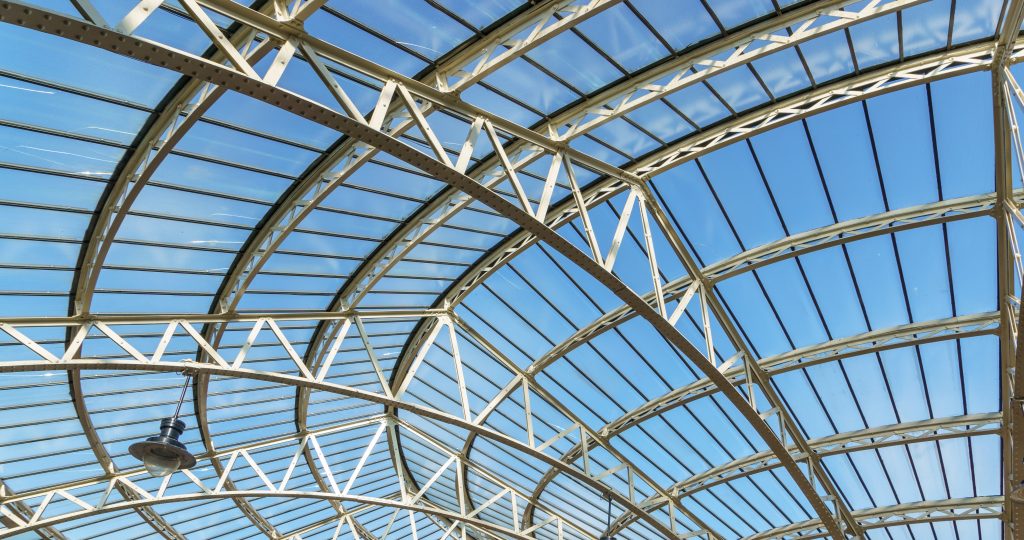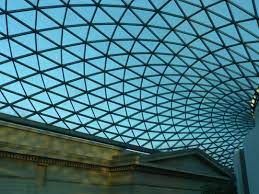Last Updated on February 11, 2023 by admin

It is the process of covering a building’s roof with durable material to give it security, safety, insulation, privacy, and other advantages. This article will discuss polycarbonate roofing and its types, an attractive choice for roofing.
Polycarbonate roofing : what is it?
Polycarbonate is a thermoplastic material that is solid and resilient. Moreover, polycarbonate is exceptionally lightweight and can withstand extreme temperatures, both hot and cold. The qualities of this material make it a suitable roofing material for a wide variety of applications. Even though polycarbonate roofs are not ideal for houses, they are perfect for decks, garages, patios, sheds, conservatories, and garages.
As well as pool covers and industrial warehouse roofs, polycarbonate is often used for roofs on industrial buildings. Due to their virtually unbreakable nature, a wide variety of outdoor uses can be achieved with polycarbonate panels. The impact strength of polycarbonate is 250 times greater than that of acrylic, and 30 times greater than that of float glass.
Read more: GFCI Outlet: An Ultimate Guide About Why GFCI Outlet Keeps Tripping
The old traditional materials should not be used for translucent or transparent roofs. Instead, use polycarbonate sheets. Traditionally, people used wood, concrete, clay, or stone for their tops, but things have changed.
Transparent roofs are in vogue, and polycarbonate roof panels are commonly used. Aside from being durable, flexible, sturdy, lightweight, and UV-resistant, these panels are also lightweight. No matter what the temperature is, polycarbonate clear roofing panels can withstand it.
Characteristics of polycarbonate roofing
The rigidity of polycarbonates can be maintained up to 140°C, while the toughness can be kept at -20°C or even lower with exceptional grades. This material has excellent mechanical properties and is dimensionally stable due to its amorphous nature. In addition to being thermally resistant and rated as slow-burning, flame retardant grades are also available, which have passed several severe flammability tests.
Polycarbonate exhibits 250 times greater impact resistance and tensile strength than glass. Polycarbonate’s high impact strength (up to 250 times greater than the strength of glass!) allows it to be tinted, colored, or even reflective like glass. In this case, polycarbonate is often referred to as bulletproof glass since it can be made bulletproof. Due to its bulletproof properties, polycarbonate is often called ‘bulletproof glasses’.
However, abrasion-resistant polycarbonate materials also address this issue and make polycarbonate highly abrasion-resistant. While polycarbonate is susceptible to scratching, abrasion-resistant forms of polycarbonate are also available.
A mixture of metal and plastic is applied to anti-static polycarbonate, preventing static electricity from forming. It also provides excellent chemical resistance.
What are the types of polycarbonate roofing?
1. Mirrored polycarbonate
There is no denying the beauty of glass, but no one likes the ease with which it can be broken. Mirrored polycarbonate has become a preferred choice for those seeking a mirror that will not break if looked at funny. Several industries – such as automotive, dentistry, cosmetics, and corrections – use polycarbonate mirrors to improve their products and facilities.
2. Abrasion-resistant polycarbonate (AR)
Some drawbacks to polycarbonate sheeting include its tendency to scratch more easily than glass and some other plastics. Therefore, we developed a polycarbonate sheeting product designed to address that shortfall. This resilient, flexible product is perfect for schools, hospitals, correctional facilities, and anywhere where accumulated abrasions pose a problem.
3. Polycarbonate with multiwall
Polycarbonate multiwall sheeting is exactly that – layers of polycarbonate sheeting are stronger, more versatile, and more insulating than plain polycarbonate sheeting.
4. An anti-static polycarbonate
Scientific and sterile environments aim to avoid static as much as possible since it can cause damage to sensitive equipment and affect experimentation results. The anti-static sheeting we offer is perfect for areas with tight environmental controls.
5. Polycarbonate bulletproof
In addition to bulletproof polycarbonate sheeting, we may also mention that there are a variety of bulletproof varieties available. There is a common term for this material: bulletproof “glass,” which is as thick as a polycarbonate pane and is widely used across banking, law enforcement, security, and corrections.
6. An FDA-approved polycarbonate
People who work in the food-handling industry know how difficult it is to find FDA-approved materials, particularly when it comes to custom-sized molds and dies. It’s good that the FDA-approved polycarbonate meets both FDA and NSF standards 51.
7. Polycarbonate clear
Skylights, sign faces, covered walkways, and other transparency applications have become increasingly popular. Since polycarbonate is 250 times stronger than glass and has superior temperature resistance and tensile strength, there’s a good reason for that.
8. Flame Retardant Polycarbonate
Open flames can generate high temperatures that can be too much for polycarbonate, even though it has incredible temperature resistance. The fire risk is ever-present in some environments, so it’s a good idea to invest in flame retardant plastic sheeting while you’re at it.
Benefits of Polycarbonate roofing
In addition to being nearly unbreakable, polycarbonate can also withstand extreme levels of force. Polycarbonate even comes in bulletproof varieties, which are used in shields used by police. As an added benefit, these sheets are lightweight, which makes them easy to transport and install.
Polycarbonate is an excellent material for building awnings and sunrooms because it blocks UV rays. In addition to its properties, polycarbonate can also be used for greenhouse construction.
In addition to its resistance to extreme temperatures, polycarbonate panels can also withstand sunlight, snow, rain, and impact. Consequently, the panels can last for many years without fading, discoloring, or being damaged by various things.
Drawbacks of Polycarbonate Roofing
It is possible to use polycarbonate as a roofing material despite its many advantages, but it also has a few downsides. Polycarbonate sheets are susceptible to denting or scratching if extra care and caution are not taken.
Conclusion
The polycarbonate roofing material provides outstanding insulation from weather conditions and impacts. There is nothing like the durability and light transmission of polycarbonate roof panels. It is advisable not to walk on the clear roofing panels because they may break and cause injuries.
FAQs (Frequently Asked Questions)
How long does polycarbonate roofing last?
About 20 years are expected to pass before polycarbonate roofs need to be replaced. Nevertheless, a conservatory with a polycarbonate roof between 10-20 years old is highly likely to have problems maintaining a comfortable temperature. Therefore, we recommend replacing it as soon as possible.
Does polycarbonate yellow over time?
In contrast to acrylic, polycarbonate does lose its color clarity over time and will take on a yellow hue when exposed to UV light for an extended period.
Can you walk on a polycarbonate roof?
It is not recommended to walk on polycarbonate roofing unless it is well supported. The polycarbonate roofing material can withstand a lot of abuse, but it is not designed to support people. You will likely fall due to the slippery surface. Further, it can be scratched and dented when walked on.
Apart from this, if you are interested to know more about Benefits of hiring a roofing contractor then visit our Home improvement category.











